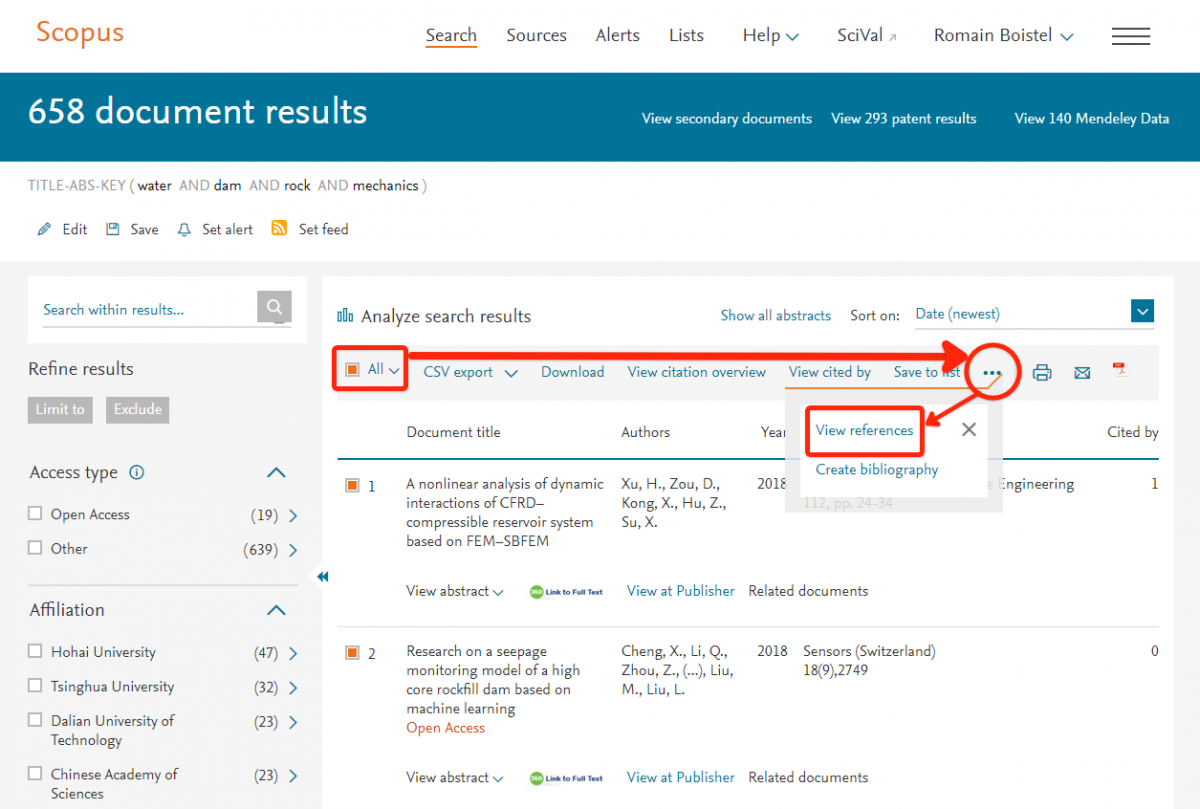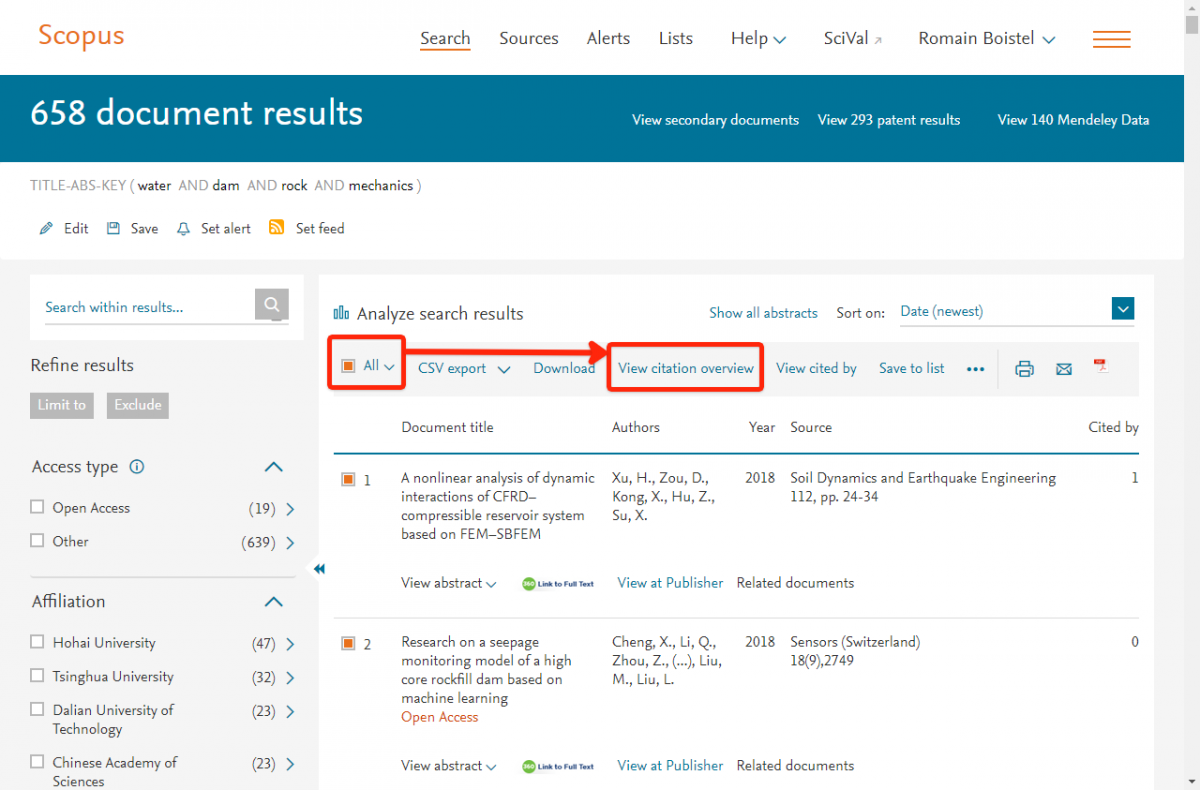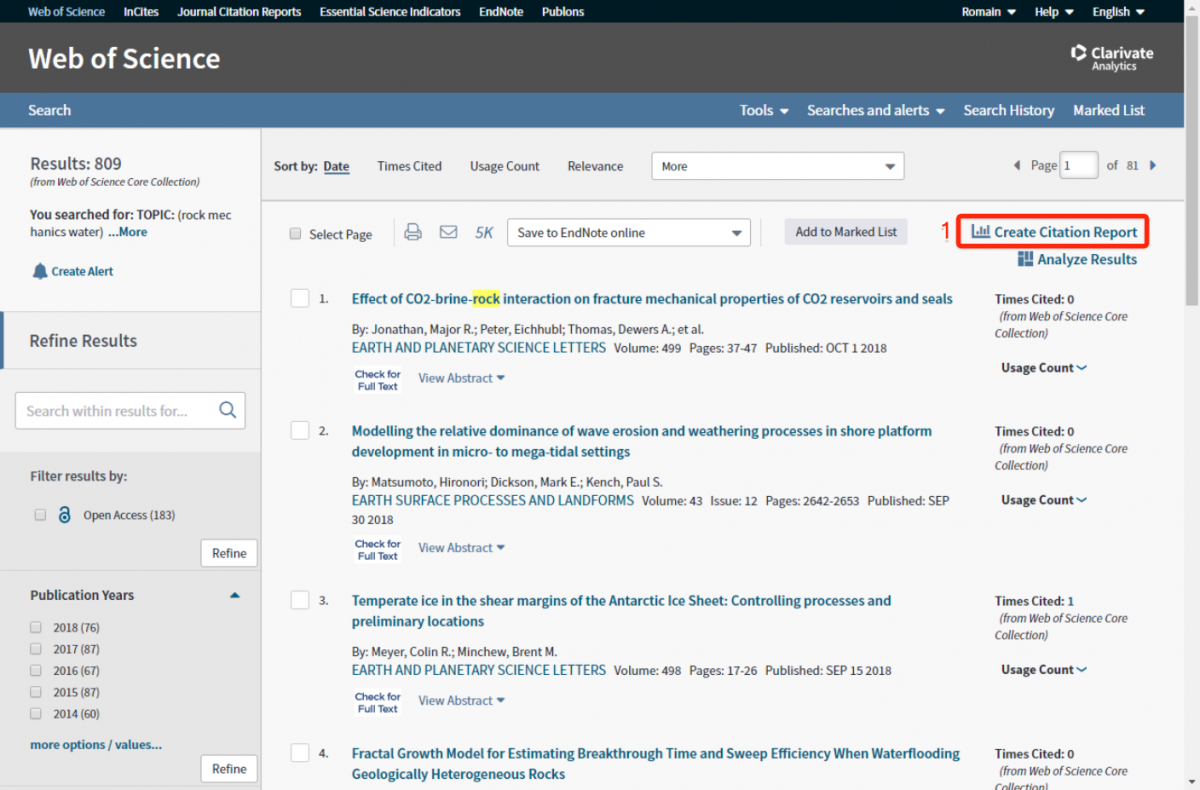Most of the time, you already know the journals in your field of study, those in which you or your team are used to publish in. But sometimes we are contacted by researchers because of their new collaborations, or the evolution of their work, which create a need to publish in new journals more suited to their new fields of study. How to best identify them?
Starting from the bibliography
You can start from your bibliography and request each article in a citation database (Scopus, Wos, Dimensions). For each article you will then get access to the list of all cited and citing references. One of the most powerful features of these databases is the ease of making "citation hoping", i. e. skipping from article to article:
- From the references cited by the articles of your bibliography:
- WoS and Scopus allow you to display the list of all cited references in each article record. Scopus also allows you to make a global export of all the cited references of all the articles that come out as the result of a query.
Restart a search in Scopus to display all the references cited by a given corpus.
- Bibliographies can also be accessed from Dimensions and from some HAL records.
From there, you can do a deeper analysis with a csv export or by using a reference management software.
- WoS and Scopus allow you to display the list of all cited references in each article record. Scopus also allows you to make a global export of all the cited references of all the articles that come out as the result of a query.
- From the references that cite the articles of your bibliography:
- Wos and Scopus allow you to display the list of all articles that cite the one you are viewing, but also make a global export of all the references that cite the articles that come out as the result of a query.
Restart a search in Scopus to display all the references that cite a given corpus.
Restart a search in the WoS to display all the references that cite a given corpus.
- Google Scholar also allows you to display the references that cite each article.
- Wos and Scopus allow you to display the list of all articles that cite the one you are viewing, but also make a global export of all the references that cite the articles that come out as the result of a query.
Use a journal selection tool
Journal selection tools are services that ask for the title and the abstract of the article you want to publish, analyse them and then suggest some journals that might match to the subjects they identify. They also provide additional informations such as an impact score for each journal, their Open Access policy, or the average time for the articles to be reviewed. Many publishers offer their own search tool for their own journals, and there are also generic tools.
Generic tools
 Journal / Author Name Estimator (JANE) for journals indexed in PubMed only
Journal / Author Name Estimator (JANE) for journals indexed in PubMed only Endnote Web, attached to the Web of Science (an account is required)
Endnote Web, attached to the Web of Science (an account is required) Cofactor Journal Selector (in progress, with a still very limited selection of journals)
Cofactor Journal Selector (in progress, with a still very limited selection of journals)Publishers’ tools
Do a thematic search of journals on Scopus
You can contact and ask us to implement this method as a service of the Lab. We use on one hand the list of the 37,500 Scopus journals, and on the other hand the list of the 362 domains and sub-domains in which they are categorized.
We can then select the sub-domains corresponding to your work, and cross-reference those with their journals to see which ones seem to match. Several combinations can give different results and this gives a good overview of the existing journals for any subject.
Assess the selected journals
Once a short list of journals has been preselected, you can refine it with the following criteria:
Impact et réputation
Indicators can be calculated to estimate the impact factor of journals according to several criteria, including the average citation rate of all of their articles. Subsequently, the impact factor became a proxy to estimate the quality of the journal’s content and hence the prestige of the researchers who publish in them. The Scimago Journal Rank website offers a good selection of these indicators. They can be complemented with qualitative data such as the endorsement of learned societies, the reputation of the board members or the number of years of operation of the journal.
The score of a journal can influence how it is perceived by readers and also allows it to be compared with other journals in the same field. At the journal level, the most well-known indicators are Clarivate's Impact Factor and Elsevier's CiteScore. At the article level, there are some alternative indicators such as Altmetric that covers social network sharing, blog comments or media coverage: they may be more appropriate depending of your target audience.
In general, these indicators are mentioned on the journals' home page, but "predatory" publishers may embellish them. You can ask us to check these scores.
Audience
Is the journal read by the specialists you want to reach? There is several way to estimate the audience:
- Have a look at the articles, the editorials and the publishing policy of the publisher to evaluate the quality and the consistency of the published materials with the target audience.
- Consider choosing an Open Access journal if your goal is to reach the widest possible audience.
- Check if the journal is correctly indexed in the main citation databases (Scopus, Web of Science…), but also in some specialized databases relevant for some particular groups of researchers (PubMed, CiteSeerX…).
Open Access Policy
Public bodies and funding agencies are increasingly pushing towards Open Access publication of the articles. Since 2016 the Loi pour une République Numérique (Digital Republic Act) allows researchers to deposit the postprint of their articles in an Open Access repository like HAL, 6 months after publication (or 1 year for the SSH). The École des Ponts has implemented a Mandate for the sharing of science that stipulates an obligation of Open Access deposit as soon as the law allows it.
By 1 January 2021, the main European funding agencies, including the french Agence Nationale pour la Recherche, will make Open Access publication mandatory for all research funded by them. Articles will either have to be published in purely Open Access journals or deposited in repositories like HAL at the time of their publication. It it called the Plan cOAlition S. We encourage you to anticipate this obligation from now when choosing in which journal you want to publish.
Rate and average duration of acceptance
The acceptance rate of articles might be considered as an indication of a journal’s quality standard. This information is sometimes provided on publisher’s websites or by the journal selection tools.






